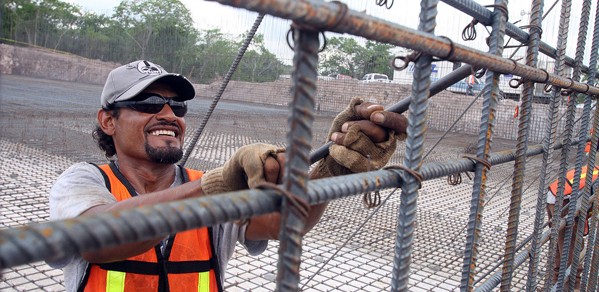
Musa Chunge is a Gates Scholar studying for a MPhil in embedded sensor technology at the Department of Engineering's Centre for Smart Infrastructure and Construction (CSIC). In this article he explains why tackling problems around building infrastructure could address unemployment in low-income countries.
What do we build, how do we build it and who are we building for? These are three critical questions that must be addressed as we tackle the problems around infrastructure in the developing world
Musa Chunge
What do we build, how do we build it and who are we building for? These are three critical questions that must be addressed as we tackle the problems around infrastructure in the developing world.
The answer to the first question is easy: everything. Developing countries suffer from inadequate (if existing) infrastructure, unsuitable transportation networks, poor access to water, insufficient energy grids, deficient healthcare systems and limited education and emergency facilities. The needs are evident and distressing.
The second question is not as straightforward. Technological advancement in construction is leading to leaner projects and faster building times. Satellite-guided pavers make light work of high-quality road construction. Prefabrication and modular construction are other examples. These techniques streamline the building process by cutting down on labour and associated costs. They are welcome improvements in, for example, economies where labour is very expensive or regions that need to build in quantity and do so fast. But is the state-of-the-art template the wisest approach for low-income countries?
A recent survey by the International Labour Organization revealed some staggering statistics across many developing countries. In Cambodia, Egypt, Liberia, Malawi, Peru and Togo, over 60% of young adults are unemployed or relying on low-quality jobs with irregular incomes and little hope for material independence. Most developing nations are not faring much better.
This leads into the third question. Infrastructure is a crucial aspect of the struggle against poverty and joblessness, but it is a slow remedy, effectual only after it has actually been built. However, if the construction process is capitalised upon, it can be a dynamo for job creation and skill development; a helping hand to the poor. With the massive need for infrastructure in developing countries, labour-driven construction would help stem the immediate unemployment problem while simultaneously addressing long-term development targets.
There are important considerations tied in with this notion: project financing, quality training and urban versus rural appropriateness, among others. But job creation should have a seat at the table when decisions are made. Construction technology must be applied thoughtfully, not blindly. Create jobs. Generate incomes where there were none before. Build hope.
Musa Chunge is of Kenyan-Irish descent born and raised in Nairobi. Prior to Cambridge he studied civil engineering at the University of Waterloo (Canada).
This article first appeared in The Scholar, an annual magazine dedicated to the work of the Gates Scholars in Cambridge.

